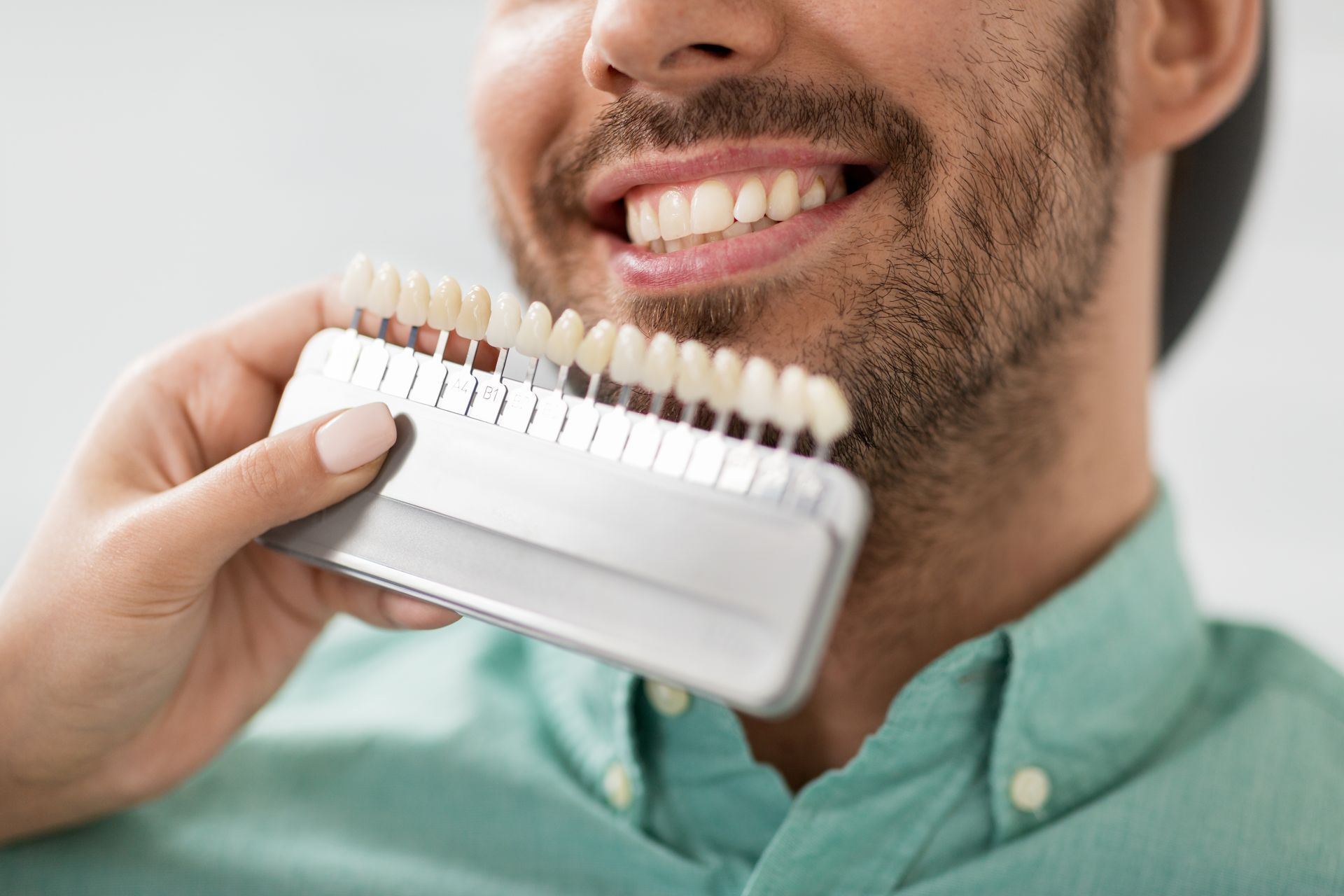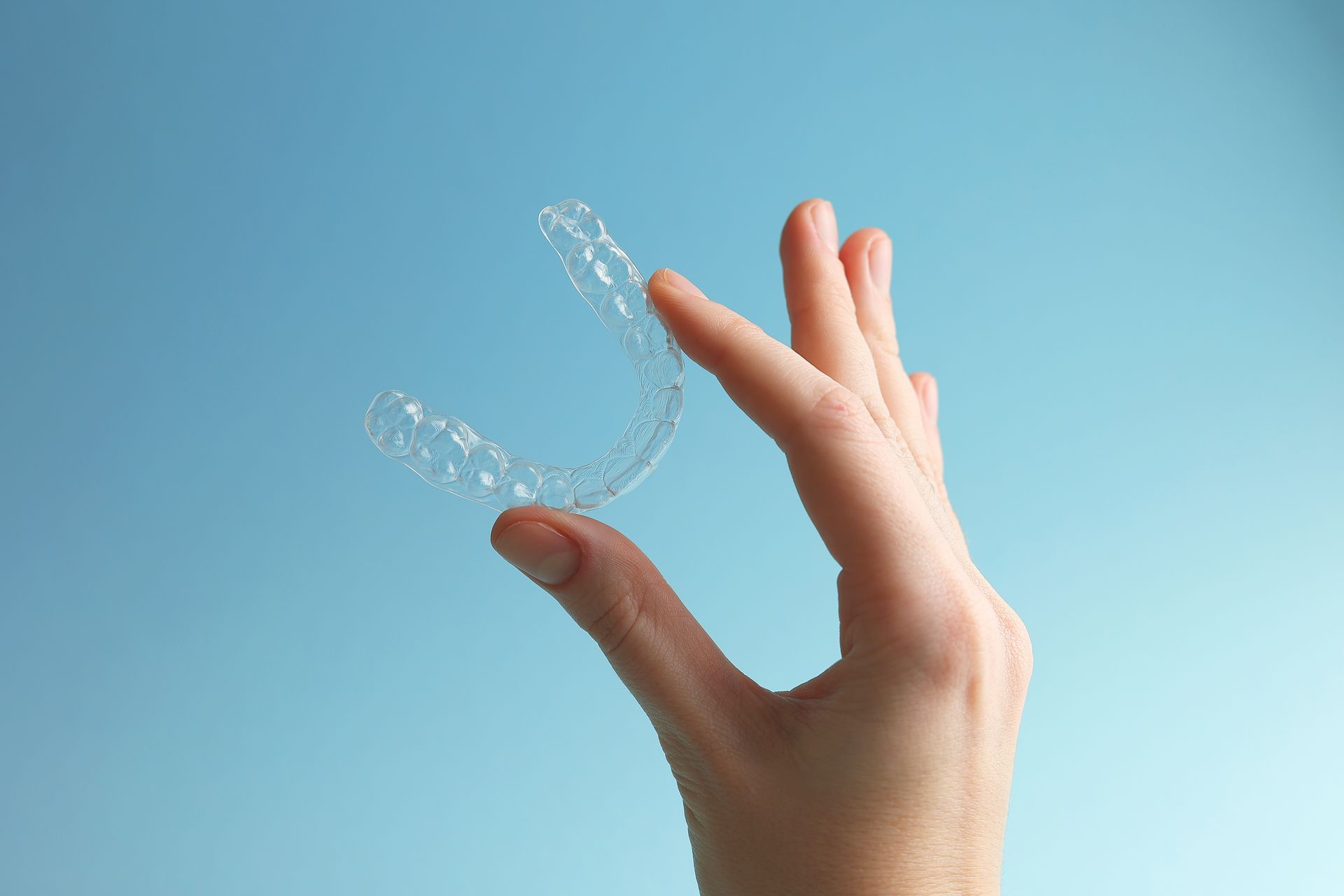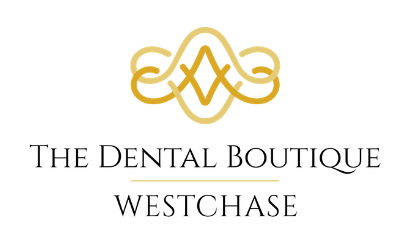Dental News and Information in Westchase, Tampa
Get the latest news and information on a variety of dental related topics to keep you and your family better informed.

Let’s talk about something real for a minute—losing teeth happens. Whether it’s due to injury, age, or decay, many people will face the decision of replacing missing teeth at some point. And when that time comes, the conversation often turns to dentures. But then things get a little murky: Should you go with partial dentures ? Are traditional full dentures better? What’s the actual difference? If you’re feeling overwhelmed by choices or just want a straight answer, you’re in the right place. Let’s break down what each type does, who they’re for, and how they fit into your daily life—no fluff, just clarity. What Are Traditional Dentures? Traditional dentures are what most people picture when they hear the word “dentures.” They replace an entire arch of missing teeth—either upper, lower, or both. They sit on your gums and are usually made from acrylic, sometimes with a metal base for extra strength. They’re removable, which makes cleaning easy. But they do rely on suction (and sometimes denture adhesives) to stay in place. Traditional dentures are best if: You’ve lost all or most of your teeth in one arch Your gums and jawbone are healthy enough to support them You want a removable, cost-effective solution Today’s dentures are a far cry from the old-school models your grandparents might’ve worn. With modern techniques, they can look incredibly lifelike and feel surprisingly secure—especially when paired with denture stabilizers or adhesive gels. What Are Partial Dentures? Partial dentures are like puzzle pieces—they fill in the gaps when you still have some natural teeth left. They attach to those remaining teeth with clasps or precision attachments, helping anchor the appliance for a snug, stable fit. They’re a solid choice if: You’re only missing a few teeth (but not all in a row) Your existing teeth are strong enough to support the device You want something removable and non-invasive Partials can be made with a metal framework, flexible acrylic, or even a combination of materials depending on your needs and preferences. Key Differences: Partial vs. Traditional Dentures Let’s boil it down: Partial dentures replace a few missing teeth and anchor to natural ones Traditional dentures replace all teeth in the upper or lower arch Partials are often more discreet and compact Full dentures cover a larger surface area and rest solely on the gums Traditional dentures are often more affordable up front when replacing a full arch It’s not just about how many teeth are missing—it’s also about your gum health, jawbone density, and personal lifestyle. A trusted dental provider will help you weigh those variables, but understanding the basics puts the power in your hands. The Process: What to Expect No matter which type you’re getting, dentures typically follow a similar journey: 1. Initial Evaluation Your dentist examines your oral health, remaining teeth (if any), and bone structure. Impressions or digital scans are taken to design a snug, comfortable fit. 2. Try-In and Adjustments Before your final set is made, you’ll often try on a wax model to check how the dentures will look and feel. This step is important—it ensures comfort and aesthetics before the permanent version is crafted. 3. Final Fitting Once the dentures are ready, they’re fitted, adjusted, and polished. Your dentist will walk you through how to wear and care for them. Some people adjust quickly to their new dentures; others need a few weeks to get used to talking and eating with them. Patience, practice, and follow-ups make a big difference. Benefits of Dentures: Confidence, Function, and Health Dentures aren’t just about appearances (though they can give your smile a big boost). They also improve daily life in concrete ways: Restore Chewing Function : Enjoy more foods without discomfort Improve Speech : Missing teeth can cause speech issues; dentures help restore clarity Preserve Facial Structure : Dentures help prevent that “sunken” look that can happen with missing teeth Boost Self-Esteem : Smiling with ease is more than just cosmetic—it’s emotional According to the American College of Prosthodontists, over 36 million Americans are missing all their teeth, and about 90% of those individuals use dentures. So if you're considering them, you're far from alone. Care and Maintenance Tips Dentures are durable, but they do require care to stay fresh and functional. Clean daily with a soft-bristle brush and non-abrasive denture cleanser Soak overnight in a denture solution or plain water to maintain shape Avoid hot water which can warp the material Handle with care —dropping them can crack or damage the appliance And don’t forget to visit your dentist regularly. Even without natural teeth, your gums and oral tissues need professional evaluation to catch potential issues early. So, Which One’s Right for You? Choosing between partial and traditional dentures really comes down to your current oral health and how many teeth you're missing. If you've lost all your teeth on the top or bottom (or both), traditional dentures are usually the go-to option. They’re designed to restore a full arch and can bring back both function and confidence. But if you still have some healthy natural teeth holding strong, partial dentures might make more sense. They’re designed to fill the gaps while working with what you already have, offering stability without replacing everything. Some people prefer the feel and smaller size of partials, especially if they’re only missing a few teeth scattered throughout their mouth. This isn’t a decision you have to make alone. The best way to find the right fit is by working with a dentist who understands not just your teeth, but your lifestyle and long-term goals. Still unsure which denture solution is right for you? Call The Dental Boutique Westchase at 813-536-7766 to schedule a consultation and find the right fit for your smile, confidence, and lifestyle.

You’ve heard it before: “Brush and floss regularly.” And yes, that advice is absolutely solid. But what if we told you that your kitchen has just as much to do with your dental health as your toothbrush? The truth is, what you eat (and how you treat your mouth every day) can make a huge difference in how long your smile stays strong, bright, and cavity-free. Let’s talk about the foods and practices that actually support healthy teeth—and the ones that might be doing more harm than you think. Best Foods for Healthy Teeth: Your Smile’s Grocery List Eating for your teeth isn’t just about cutting out sugar. It’s about feeding your enamel, your gums, and even your saliva. Yes—your mouth has its own microbiome, and it thrives on the right nutrients. Here are some superstar smile foods: 1. Crunchy Fruits and Veggies Think apples, celery, and carrots. These fibrous, water-rich snacks actually help scrub your teeth as you chew, and they stimulate saliva, which is your mouth’s natural defense system. 2. Cheese and Yogurt Dairy is packed with calcium and phosphates that strengthen enamel and support bone health. Bonus: Cheese can balance the pH in your mouth and reduce acid after meals. 3. Leafy Greens Spinach, kale, and Swiss chard are full of vitamins and minerals like calcium, folic acid, and vitamin C—all great for gum health and tissue repair. 4. Nuts and Seeds Almonds, sesame seeds, and sunflower seeds bring protein, minerals, and a little tooth-friendly crunch. They’re also low in sugar, so you won’t be feeding cavity-causing bacteria. 5. Green Tea Loaded with antioxidants and naturally antibacterial compounds, green tea can reduce inflammation and support gum health. Just watch the staining if you drink it often—try rinsing your mouth with water afterward. Foods That Harm: What to Limit or Avoid There’s no need to ban these from your life entirely, but being aware is half the battle. Sticky Candies : Taffy, gummies, and dried fruits tend to cling to your teeth and feed bacteria for hours. Soda and Sports Drinks : Acidic and sugary—a double threat to enamel. Chips and White Bread : Refined starches break down into sugar quickly and can sneak into hard-to-clean spots between teeth. Coffee and Wine : Frequent exposure can lead to staining, and the acidity may wear enamel over time. If you do enjoy these, rinse with water afterward and try to wait 30 minutes before brushing. That gives your saliva time to neutralize acids and protect your enamel. Smart Practices That Protect Your Teeth Every Day Diet alone can’t do it all—daily habits still carry the bulk of the load when it comes to oral hygiene. But you’d be surprised how often people skip the basics or follow old habits that don’t work as well as they think. Here’s what you really need: 1. Brush Smarter, Not Harder Use a soft-bristled toothbrush and brush for two full minutes, twice a day. Scrubbing too hard can wear down enamel and irritate your gums. Gentle and thorough wins the race. 2. Floss Like You Mean It Floss once a day to get rid of debris and plaque your toothbrush can’t reach. String floss or floss picks—whichever you'll actually use—are both great options. 3. Rinse Wisely Mouthwash can help kill bacteria, freshen breath, and add fluoride—but choose an alcohol-free option to avoid drying out your mouth. 4. Hydrate All Day Dry mouth equals more plaque buildup and bad breath. Water helps rinse away food particles and keeps everything flowing, especially if you're not chewing gum or eating snacks often. 5. See Your Dentist Twice a Year Professional cleanings remove hardened tartar and catch problems early—before they turn into big, painful issues. Prevention really is the best medicine. The Benefits of Healthy Habits: Backed by Research When you combine smart food choices with daily oral hygiene, the benefits are more than cosmetic. According to the Centers for Disease Control and Prevention (CDC), poor oral health is linked to conditions like heart disease and diabetes. That means your teeth and gums are part of your overall wellness picture. Additional benefits include: Stronger enamel and fewer cavities Healthier gums with reduced risk of gingivitis and gum disease Fresher breath and more confidence Fewer dental emergencies and costly treatments And let’s not forget: maintaining good oral health can literally save your smile—and your money—in the long run. Quick Add-Ons That Make a Big Impact Here are a few small shifts that can yield major results: Chew sugar-free gum after meals (xylitol gum is especially effective) Use a straw for acidic drinks to minimize enamel contact Swap out snacks for tooth-friendly ones like nuts, cheese, or sliced veggies Switch to an electric toothbrush for a more effective clean with less effort These don’t require overhauling your life—just tiny tweaks that protect your dental health day after day. Want to make sure your teeth are getting the care they deserve? Call The Dental Boutique Westchase at 813-536-7766 to book an appointment and get personalized advice for keeping your smile strong, healthy, and beautiful—inside and out.

Let’s say you’ve got a tooth that’s been giving you trouble—maybe it’s cracked, decayed, or even missing altogether. You’ve been told you might need a crown… or maybe a bridge. But what’s the actual difference between the two? They sound kind of similar, and they both live in the realm of restorative dentistry. So how do you know which one is right for your situation? Let’s clear up the confusion and help you feel confident about your next dental move. First Things First: What’s a Crown? Think of a dental crown like a protective helmet for a damaged or weak tooth. It completely covers the visible part of your tooth, restoring its shape, size, and strength while also improving its appearance. Crowns are typically made from porcelain, ceramic, or a blend of materials that mimic the natural look and feel of teeth. Crowns are often used when: A tooth is cracked or broken There’s a large cavity that can’t be fixed with a filling A tooth has undergone a root canal You want to cover a severely discolored or misshapen tooth You’re protecting a worn-down tooth from further damage Once placed, crowns are durable and can last anywhere from 10 to 15 years—sometimes even longer with great care. So What About a Bridge? A dental bridge, on the other hand, is used to replace one or more missing teeth. It quite literally “bridges” the gap between healthy teeth. It’s made up of one or more prosthetic teeth (called pontics) that are anchored in place by crowns on the surrounding healthy teeth (called abutments). You might need a bridge if: You’ve lost a tooth due to injury, decay, or extraction You want to restore function to your bite You’re concerned about shifting teeth or jaw misalignment Bridges help restore chewing power and prevent nearby teeth from drifting out of place. They’re a practical and long-term fix for tooth loss when implants aren’t an immediate option. Spot the Difference: Crowns vs. Bridges Here’s a breakdown of how crowns and bridges differ in purpose and design: Crowns restore a single tooth that’s still in place Bridges replace one or more missing teeth by anchoring to adjacent teeth Crowns can be used alone, while bridges are a system of connected crowns and artificial teeth Crowns can be used as part of a bridge (on the anchoring teeth), but not all crowns are part of a bridge In short, if your tooth is damaged but still intact, you’re likely looking at a crown. If the tooth is missing entirely, a bridge may be your solution. The Process: What to Expect for Each Whether you’re getting a crown or a bridge, the process shares some similarities—but with some key differences. Getting a Crown Your dentist will prep the damaged tooth by removing any decay and reshaping it to fit the crown. Impressions are taken to ensure the crown fits perfectly. A temporary crown is placed while your permanent one is created. A few weeks later, the permanent crown is bonded into place. Getting a Bridge The teeth on either side of the missing tooth (the abutment teeth) are reshaped to fit crowns. Impressions are taken to build your custom bridge. A temporary bridge is placed while your permanent one is being made. Once ready, the final bridge is cemented into place. Both procedures are usually done in two visits and can be completed comfortably with local anesthesia. Benefits of Crowns and Bridges: Function Meets Aesthetics Crowns and bridges don’t just restore your smile—they bring tangible quality-of-life improvements, too. Here’s what the research and professional associations say: American Dental Association (ADA) notes that crowns and bridges can help preserve the natural alignment of your jaw and bite. Improved Functionality : You’ll chew, speak, and smile with greater ease and comfort. Natural Appearance : Modern materials blend beautifully with natural teeth. Long-Lasting Results : With proper care, crowns and bridges can serve you well for over a decade. Plus, they’re often more affordable and faster to complete than implants, especially for patients who want a timely solution. Keeping Them in Great Shape: Your At-Home Guide Maintaining crowns and bridges doesn’t require any over-the-top routines—just consistent, smart care: Brush twice a day with fluoride toothpaste Floss daily (using a floss threader for bridges) Avoid chewing hard candies, ice, or other tooth-breaking culprits Schedule regular dental checkups Your dentist will keep an eye on the integrity of the crown or bridge and the health of the surrounding teeth. If you're unsure whether you need a crown or a bridge, let the experts help. Call The Dental Boutique Westchase at 813-536-7766 to book your appointment and get a customized treatment plan that fits your smile and your lifestyle.

Have you ever wondered why some people seem to have naturally perfect teeth, like their smile just stepped off the cover of a magazine? The secret often isn’t genetics—it’s dental veneers. And honestly, they’re not just for celebrities or influencers anymore. Veneers have become one of the most accessible and popular cosmetic dentistry options available today. But are they right for you? Let’s pull back the curtain on what veneers are, how they work, and why they might just be the smile upgrade you’ve been waiting for. What Are Dental Veneers, Really? Dental veneers are thin, custom-made shells—usually made from porcelain or composite resin—that cover the front surface of your teeth. Think of them as little masks for your teeth, designed to correct a whole list of imperfections, from chips and cracks to discoloration and minor misalignment. Once bonded to your teeth, they look and feel like a natural part of your smile. They’re ideal for people looking to: Whiten teeth that don’t respond to traditional whitening treatments Close small gaps Fix slightly crooked or oddly shaped teeth Cover chips or worn enamel And yes, they’re built to last. Porcelain veneers, in particular, can hold up beautifully for 10–15 years with proper care. The Veneer Process: From Consultation to Confident Smile So how does the journey to veneers unfold? It typically starts with a consultation. Your dentist evaluates your teeth, talks through your goals, and may even show you a mock-up of what your smile could look like post-treatment. From there, here’s what to expect: 1. Tooth Preparation A small amount of enamel—usually less than a millimeter—is gently removed from the tooth’s surface to make room for the veneer. Don’t worry, this process is generally painless and very controlled. 2. Impressions and Customization Your dentist will take impressions or digital scans of your teeth to create veneers that match your smile and facial structure. You’ll often receive temporary veneers while the permanent ones are crafted in a dental lab. 3. Placement and Bonding Once your permanent veneers are ready, they’re carefully placed and adjusted for a perfect fit. The final bonding process ensures your new smile looks seamless and feels natural. Benefits of Dental Veneers: More Than Just Good Looks Dental veneers go beyond surface-level aesthetics—they bring practical advantages, too. Here’s why dentists and patients alike are big fans: Stain Resistance : Porcelain veneers resist stains better than natural enamel. Durability : With proper oral hygiene and regular checkups, veneers can last over a decade. Minimally Invasive : Compared to crowns, veneers preserve more of your natural tooth structure. Instant Confidence : Many patients report a boost in self-esteem after treatment. According to the American Academy of Cosmetic Dentistry, patients who invest in cosmetic dental improvements like veneers often experience greater confidence and social engagement. That’s not just surface-deep—it can change the way you carry yourself day-to-day. Caring for Veneers: Simple Habits, Big Impact Maintaining your veneers is straightforward, but consistency is key. Here are a few tips: Brush and floss daily with a non-abrasive toothpaste Avoid chewing on hard objects (ice, pens, fingernails) Wear a mouthguard if you grind your teeth at night Keep up with regular dental cleanings and checkups While veneers are strong, they’re not indestructible. Good oral hygiene habits can extend their life and protect the natural teeth underneath. Are Veneers Right for You? Veneers aren’t a one-size-fits-all solution, but they do offer a wide range of possibilities. If your teeth are healthy overall, and you’re looking to correct cosmetic concerns without undergoing orthodontic treatment or more invasive procedures, veneers could be a great fit. However, if you struggle with gum disease, significant decay, or chronic teeth grinding, your dentist may recommend addressing those concerns first before considering veneers. Ready to explore how cosmetic dentistry can give you a brand new you? Contact The Dental Boutique Westchase at 813-536-7766 to schedule your consultation and discover if dental veneers are the key to your confident, stunning smile.

Have you ever noticed how a single healthy smile can brighten an entire room? That spark isn’t luck—it’s the quiet result of habits, smart choices, and timely professional care that begin early and continue for life. Family dentistry weaves those elements together so every member of your household—from toddlers losing their first baby teeth to grandparents maintaining crowns—enjoys confident, comfortable oral health year-round. What Is Family & Preventive Dentistry? Family dentistry is the all-ages branch of general care that keeps everyone’s smiles on schedule, while preventive dentistry is the proactive game plan behind it. Together they focus on four key pillars: Routine checkups and cleanings – those twice-yearly “ teeth cleaning near me ” appointments that remove plaque, polish enamel, and screen for early concerns. Patient education – bite-size lessons on brushing, flossing, diet tweaks, and oral habits. Protective treatments – fluoride varnish, dental sealants, and athletic mouthguards that shield teeth before problems start. Early intervention – catching cavities, gum inflammation, and bite problems before they escalate into painful (and costly) repairs. Because kids grow quickly and adults’ lifestyles evolve, sticking to a predictable hygiene schedule means each visit adapts to your family’s changing needs and avoids last-minute emergencies. Core Preventive Services for Every Age Even the most diligent brushing and flossing routine leaves behind hard-to-reach plaque. A professional “ teeth cleaning near me ” is your best defense against hidden tartar. During these visits, your hygienist and dentist will often provide: Comprehensive exams – visual checks, digital X-rays, and oral-cancer screenings. Prophylactic cleaning – careful removal of soft plaque and hardened calculus. Polishing & fluoride – smoothing enamel and strengthening it against acid attack. Sealants for kids & teens – thin resin coatings that reduce molar cavities dramatically. Because the mouth is a gateway to the entire body, preventive services protect far more than teeth and gums—they support healthy eating, clear speech, and overall wellness. The Proven Benefits of Preventive Care Professional groups such as the American Dental Association (ADA), the Centers for Disease Control and Prevention (CDC), and respected medical centers agree on the advantages of routine dental care: Lower cavity risk: Regular cleanings detect soft spots early and allow fluoride or sealants to halt decay before it drills deeper. Gum disease prevention: Removing tartar every six months reduces periodontal inflammation that has been linked to heart disease, diabetes, and pregnancy complications. Cost savings: Preventive cleanings and exams cost far less than fillings, crowns, or root canals that become necessary when small issues are allowed to grow. Better everyday health: Good oral health supports nutrition, speech development, self-confidence, and day-to-day productivity. Put simply, the modest investment of a “ teeth cleaning near me ” yields outsized returns in health, comfort, and long-term savings. “How Do I Choose a Dentist?” Seven Simple Checks Typing how do I choose a dentist? into a search bar can feel overwhelming. Streamline your search with these seven patient-tested criteria: Comprehensive family focus – Confirm the office welcomes toddlers through seniors so schedules stay streamlined. Preventive philosophy – Look for teams that emphasize education, minimally invasive care, and early detection. Credentials & continual training – Board licensure plus ongoing courses show commitment to current best practices. Modern technology – Digital X-rays, intraoral cameras, and comfortable chairside tools improve both accuracy and experience. Transparent communication – Clear explanations and printed estimates build trust and let you plan confidently. Convenient location & hours – A “ teeth cleaning near me ” should fit work, school, and traffic realities. Positive community reviews – Consistent five-star feedback reflects dependable service and patient satisfaction. Keep this checklist handy the next time you wonder how do I choose a dentist? —it turns a daunting search into an informed, confident decision. Making the Most of Every Visit Maximize each “ teeth cleaning near me ” by following four quick tips: Update your health history: Medications, allergies, or medical changes can affect dental recommendations. Bring your questions: Jot down concerns—especially about choosing future specialists—so nothing slips your mind. Schedule as a family: Blocking appointments together models healthy habits for kids and simplifies transport. Book ahead: Six months pass quickly; add your next cleaning to your phone calendar before leaving the office. Consistency builds momentum, ensuring preventive advice becomes second nature for every household member. Your Next Step Toward Healthier Smiles Preventive and family dentistry aren’t occasional luxuries—they’re the everyday blueprint for strong teeth, fresh breath, and confident grins at every age. By pairing daily brushing and flossing with regular “ teeth cleaning near me ” appointments, you stop problems before they start and keep treatment costs low. And when you ask how do I choose a dentist? , remember to seek a practice that values education, evidence-based prevention, and friendly guidance. Ready to put these basics into action? The team at The Dental Boutique Westchase is here to make your family’s next visit easy and reassuring. Call 813-536-7766 or drop by 10909 W Linebaugh Ave #100, Tampa, FL 33626 to schedule your preventive check-up today. Let’s partner for a lifetime of healthy, radiant smiles.

If your teeth could quietly fall into perfect alignment while you carry on with work, school, or social life—without brackets, wires, or diet restrictions—would you be intrigued? That is the promise of Invisalign, the clear-aligner system that has transformed millions of smiles worldwide. Still, before you dive into another “ Invisalign near me ” search, you deserve straightforward answers: What exactly is Invisalign, how does it work, and—most importantly—is it the right choice for you ? Let’s demystify the process so you can make a confident decision about your oral health. What Exactly Is Invisalign? Invisalign is an orthodontic treatment that replaces traditional metal braces with a series of BPA-free plastic aligners. Each aligner is custom-molded to fit snugly over your teeth and move them incrementally toward their ideal positions. You’ll wear a set for about one to two weeks, then switch to the next one in the series. Over time—typically 12–18 months—your teeth shift into a straighter, healthier alignment. Because the trays are crystal-clear, they’re practically invisible in casual conversation or photos. The aligners are also removable, which means you can take them out to eat, drink anything other than water, and maintain your usual brushing and flossing routine. These features make Invisalign one of the most popular cosmetic dentistry options for professionals, students, and anyone who would prefer a more discreet path to a better smile. How Invisalign Fits Into Everyday Life Digital Mapping & 3-D Planning Your dentist begins by digitally scanning your teeth to create a precise, three-dimensional model of your current bite. Specialized software then maps out every micro-movement needed to reach your ideal alignment. You’ll even get to see a preview of your future smile before treatment begins. Custom Aligner Series A dental lab fabricates a unique set of aligners from smooth, patented SmartTrack material. You’ll wear each aligner 20–22 hours per day, removing it only for meals, snacks, and oral hygiene. Regular Progress Checks Every six to eight weeks, you’ll visit your dentist to ensure your teeth are tracking properly. If small refinements are needed, additional aligners can be ordered without restarting treatment. Retention Phase Once your teeth reach their final positions, you’ll transition to retainers—similar in appearance to your last aligner—to keep that newfound smile stable for years to come. Who Makes a Great Candidate for Invisalign? There’s no single mold for the “ideal” Invisalign patient, but the treatment tends to shine under certain conditions. Ask yourself these questions: What are my alignment needs? Invisalign is highly effective for mild to moderate crowding, small gaps, slight overbites, or underbites. Severe bite discrepancies or teeth requiring large rotational corrections may call for traditional braces or a hybrid approach. Am I committed to wearing aligners consistently? Success hinges on discipline. If you can keep the trays in for 20–22 hours daily and remove them responsibly for meals, you’re on the right track. Those who frequently forget or misplace trays might struggle to achieve optimal results. Is my oral health in good standing? Healthy gums and cavity-free teeth are essential before beginning any orthodontic treatment. Active gum disease or decay needs addressing first. What’s my lifestyle like? People who play contact sports appreciate being able to remove aligners and wear a traditional mouthguard. Frequent speakers, singers, or influencers often prefer clear aligners because they barely show on camera. How does cost factor into my decision? Invisalign pricing is generally comparable to traditional braces. Many dental insurance plans categorize it as orthodontic care, offering partial coverage. Flexible financing and Health Savings Accounts (HSAs) can also help manage costs. If you’re nodding “yes” to these considerations, scheduling a consultation at The Dental Boutique Westchase can confirm whether Invisalign is truly your best route to a confident smile. Benefits Backed by Professional Research A growing body of clinical evidence supports Invisalign’s effectiveness when treatment is planned and monitored by a qualified dental professional. Here are a few standout advantages: Discreet Aesthetics - Transparent trays let you smile freely at business meetings, school functions, or family photos without drawing attention. A survey published in the Journal of Esthetic and Restorative Dentistry (2019) showed that adults overwhelmingly prefer the appearance of clear aligners to metal brackets. Simplified Oral Hygiene - The American Journal of Orthodontics & Dentofacial Orthopedics (2020) reports lower plaque accumulation and gingival inflammation in clear-aligner patients versus those wearing fixed braces, thanks to undisturbed brushing and flossing routines. Reduced Office Visits - Aligner changes happen mostly at home, and there are no wires to tighten. That translates to fewer chair appointments—a bonus for busy schedules. Enhanced Comfort - Smooth plastic edges help prevent the cheek and lip irritation commonly experienced with traditional braces. Predictable Results - SmartTrack material delivers gentle, consistent forces. Multiple clinical trials demonstrate reliable tooth movement and highly accurate final outcomes. FAQs: Your Most Common Invisalign Questions, Answered Will Invisalign change my speech? A slight lisp can appear in the first few days, but most people adapt quickly. Practicing difficult words aloud can speed up the process. Can I drink coffee with my aligners in? Hot liquids and pigmented beverages can warp or stain the plastic. Remove your aligners, enjoy your coffee, then brush or rinse before reinserting. How long will my treatment take? Average cases finish in 12–18 months; minor tweaks can take as little as six months. Your provider will offer a personalized estimate based on digital projections. Is Invisalign more expensive than braces? Often, costs are similar. The best way to know is to request a detailed quote that factors in your insurance benefits and any necessary refinements. Take the Next Step Toward a Straighter Smile Straightening your teeth is about more than cosmetic appeal; it’s an investment in long-term oral health and self-confidence. Invisalign offers a discreet, flexible route to that goal—one that meshes with modern lifestyles and avoids the drawbacks of metal brackets. If you’ve been endlessly scrolling through “ Invisalign near me ,” make your next click count. Call The Dental Boutique Westchase at 813-536-7766 or visit us at 10909 W Linebaugh Ave #100, Tampa, FL 33626 to schedule your personal consultation. Together, we’ll evaluate your alignment needs, discuss candidacy, and design a clear path—literally and figuratively—toward the healthy, radiant smile you deserve. Your future smile is waiting. Let’s bring it to life—one nearly invisible aligner at a time.

Imagine standing at the gates of a grand fortress, determined to keep invaders out. In the world of oral health, your teeth serve as the castle walls, and tooth decay is the adversary looking for any chance to sneak in. By creating a solid defense, you can help prevent the onset of cavities and keep your smile strong. Understanding the threats posed by decay, practicing consistent oral hygiene habits, and seeking the right professional support are key ways to fortify your dental “castle.” Below, you will find a detailed look at what cavities are, tips for preventing cavities at home, and the best strategies to identify potential problems before they worsen. Understanding Tooth Decay and Cavities Cavities develop when harmful bacteria produce acids that gradually wear away at the hard surface of your tooth—known as enamel. Over time, these small holes or “pits” can expand and become more painful if not treated. Although tooth enamel is the toughest substance in the human body, it is not invincible. Without proper care, cavities can form and lead to serious complications such as infections or tooth loss. In the early stages, you might notice a slight sensitivity to hot or cold foods. The idea of wondering “what do cavities look like?” is common; they often appear as small white, brown, or even black spots on the surface of a tooth. When left unchecked, these spots can grow, resulting in pain and discomfort. According to professional material from the American Dental Association (ADA), cavities remain one of the most prevalent health issues, but they are largely preventable with proper oral care. Everyday Tips for Preventing Cavities at Home Developing strong routines is often the best way to protect your teeth. By following a few practical steps each day, you can significantly decrease the likelihood of cavities forming in the first place. Below are some tips for preventing cavities at home: Brush Twice a Day : This step might sound obvious, yet its importance cannot be overstated. Choose a fluoride toothpaste and brush for two minutes, ensuring you reach every surface of your teeth. Fluoride is vital because it helps strengthen enamel, making teeth more resistant to acid attacks. Floss Regularly : Flossing removes food particles and plaque from places a toothbrush can’t reach, such as between teeth and beneath the gum line. When plaque is left to accumulate, it fosters harmful bacteria that can lead to decay. Rinse with Mouthwash : Antibacterial mouthwash can eliminate additional bacteria in your mouth. Look for products with fluoride or antimicrobial ingredients to maximize protection. Limit Sugary and Acidic Foods : Sweet and acidic substances, such as candy, soda, or fruit juice, give bacteria the fuel they need to produce acids. Cutting down on these items helps maintain a healthier oral environment. Stay Hydrated with Water : Drinking water helps cleanse your mouth of lingering food debris. Plus, many municipal water supplies contain fluoride, which further fortifies your teeth. By focusing on these everyday habits, you create a consistent defense system against tooth decay. While these strategies are excellent first steps, nothing replaces the benefits of a professional evaluation to ensure more advanced interventions are not needed. Identifying Early Signs: How Do I Know if I Have Cavities? It can be difficult to answer, “how do I know if I have cavities?” until you experience noticeable discomfort. However, early detection makes treatment far simpler and less invasive. Start by paying close attention to any changes in how your teeth look and feel: Visual Clues : Small, discolored spots on a tooth—often white, brown, or black—may indicate early cavities. Wondering “what do cavities look like?” is normal, and it’s important to recognize that they may be subtle. If you notice any unusual markings, consult a dental professional. Sensitivity : Ongoing sensitivity to hot, cold, or sweet foods can be a red flag. While minor sensitivity doesn’t always mean a cavity is present, it is worth investigating if the issue persists. Pain or Discomfort : Cavities in more advanced stages often cause toothaches that range from mild to severe. If pain doesn’t subside, it is a strong sign to schedule a checkup. Visible Holes or Pits : In some cases, cavities become larger holes that can be felt when running a tongue across the tooth’s surface. If you suspect a pit in your tooth, it’s time to seek professional advice. Addressing these early signs promptly helps prevent tooth decay from advancing further. A visit to an experienced dentist can confirm if a cavity exists and provide the necessary solutions—like fillings or crowns—to restore your tooth. The Benefits of Professional Care and Expert Advice Even the best at-home habits benefit from the occasional professional touch. According to professional guidelines published by the American Dental Association, scheduling regular dental exams and cleanings is vital in addressing early signs of tooth decay and other oral health concerns. Here are some of the benefits of trusting a dental expert: Comprehensive Evaluation : A professional can assess all areas of your mouth, including hard-to-reach spaces where cavities often hide. This thorough inspection prevents minor issues from becoming more serious. Professional Cleanings : Removing plaque and tartar buildup is essential for preventing cavities. Hygienists use specialized tools that achieve a deeper clean than daily brushing and flossing can provide on their own. Personalized Advice : Everyone’s mouth is different. A dentist can recommend specialized oral care products and techniques suited to your unique situation. This guidance often leads to faster improvements and better overall oral health. Restorative Treatments : If a cavity is found, addressing it promptly can save you from more extensive treatments. Fillings, crowns, and other restorative options provide reliable fixes, preventing further decay and protecting your tooth. Regular dental checkups also open the door for discussions on new techniques and products that might simplify your day-to-day hygiene routine. For personalized support, The Dental Boutique Westchase—located at 10909 W Linebaugh Ave #100, Tampa, FL 33626—can help guide you in the right direction. Their dedicated team, led by Dr. Vallo, offers expert insight to keep your teeth healthy. To explore their services, call 813-536-7766 for more information. Strengthening Your Smile One Step at a Time Preventing tooth decay is much like building a strong fortress—once you understand the threats and develop a systematic defense, you have a significantly better chance of keeping your smile secure. Recognizing the early signs of potential issues, figuring out “how do I know if I have cavities,” and learning “what do cavities look like” can be powerful steps toward preserving your oral health. Consistent brushing, flossing, and routine dental visits remain among the most effective tips for preventing cavities. Professional expertise ensures no stone is left unturned in your defense strategy. By taking these proactive steps and benefiting from professional care, you position yourself for improved oral well-being and reduced risks. Should you have any concerns or simply want further guidance, consider reaching out to a trusted dental practice. When questions arise, do not hesitate to seek out the expertise of a qualified professional for proper evaluations and treatments. A single phone call can lead to a stronger, healthier smile—your best shield against future invasions by tooth decay. Remember, the journey to a cavity-free life begins with sound preventive measures and concludes with the reassurance of expert support whenever you need it.

Have you ever felt a wave of unease just thinking about an upcoming dentist appointment? It can feel like standing at the edge of a calm lake, uncertain whether to dip your toes into the water. That sense of hesitation sometimes keeps people away from the care they need. Fortunately, there are simple ways to manage these worries and make a trip to the dentist more comfortable. In Tampa, The Dental Boutique Westchase is dedicated to supporting patients in every aspect of their oral health journey. If you have ever wondered “what to do if I am nervous about going to the dentist,” learning how to calm nerves before going to the dentist can be easier than you think. Below are some clear steps and comforting insights to guide you toward a relaxed, positive experience. Understanding Dental Anxiety Dental anxiety is a common form of stress related to visiting a dentist. It could stem from a past experience, a fear of potential discomfort, or even anxiety about unknown procedures. Feeling this way is perfectly normal and nothing to be ashamed of. In fact, research shows that many adults experience at least some level of apprehension before dental appointments. When left unaddressed, dental anxiety can lead to missed checkups and treatments. Without regular care, small oral health concerns may escalate into more serious issues. Recognizing the sources of your anxiety is the first step. By acknowledging that “yes, this is how I feel,” it becomes easier to seek reassurance and practical help from a trusted dental team. If you are looking for answers about “what to do if I am nervous about going to the dentist,” start by confiding in friends or family who have faced similar feelings. Hearing others’ experiences can reduce your sense of isolation. You can also call your dental office ahead of time to discuss any questions or worries. A caring receptionist or office coordinator can provide guidance and additional support. Practical Tips for a Relaxing Dental Visit When it comes to “Tips for a Relaxing Dental Visit,” the most important factor is preparation. By addressing your anxiety proactively, you set the stage for a more reassuring experience. Below are some approachable methods to help you feel calm and collected: Plan a Soothing Routine: Try to schedule your appointment on a day that is not overly packed with commitments. This helps keep stress levels in check. On the morning of your visit, make time for gentle stretching or a short walk. Physical activity can release tension and boost your mood. Mindful Breathing: Practice deep breathing exercises while you wait. Inhale gently through your nose for four seconds, hold for a moment, and exhale slowly through your mouth for four more seconds. Focus on the flow of your breath, letting each exhale release any nervous energy. Bring a Distraction: Listening to music or an audiobook can be a delightful way to divert your attention during a dental procedure. Many offices also offer headphones or encourage you to bring your own. If possible, chat with your dentist about what helps you feel at ease. Communicate Your Feelings: Let your dentist and hygienist know about your anxiety before any exam or treatment begins. They can adapt their approach—such as offering breaks or explaining each step in simpler terms—to keep you comfortable. Visualize a Positive Outcome: Picture yourself completing your dental visit with success. Imagining a calm, confident state of mind helps reduce feelings of worry. This mental exercise can be done in the waiting room or even the night before your appointment. Through these approaches, you learn how to calm nerves before going to the dentist. Implementing at least a few of these ideas can make a notable difference in your overall comfort level. Professional Approaches to Overcome Anxiety Modern dentistry offers many solutions designed to help anxious patients. While every situation is different, a few approaches are especially beneficial: Gentle Techniques: Dentists now use methods that minimize discomfort, such as smaller needles and numbing gels before injections. The focus is on providing the most soothing experience possible. Step-by-Step Explanations: Many offices provide thorough explanations of each part of your procedure. When you know exactly what to expect, you can mentally prepare for each stage, lowering stress. Comfortable Environments: Some dental offices, including The Dental Boutique Westchase at 10909 W Linebaugh Ave #100, Tampa, FL 33626, are designed with a calming atmosphere in mind. Soft lighting and welcoming decor can significantly lessen any apprehension you may feel before sitting in the dental chair. By combining these professional approaches with your own personal strategies, you can create a custom plan to address anxiety effectively. A supportive dental team is always ready to discuss your concerns, ensuring you never feel alone in your journey toward better oral health. Benefits of Addressing Dental Anxiety According to professional materials from organizations that study dental health, understanding and dealing with dental anxiety can lead to better overall well-being. The American Dental Association (ADA) highlights that regular checkups are key to catching problems early, preventing complications, and maintaining a bright smile. When you conquer your fears, you are more likely to keep up with these vital appointments. Beyond oral health, addressing anxiety has ripple effects across many parts of life. By learning to manage stress, you set a precedent for handling other challenging situations with confidence. Experiencing a smooth, calm dental visit can also boost self-esteem and encourage a proactive attitude toward personal health care. Conclusion Going to the dentist does not have to be an intimidating experience. With a bit of preparation, a caring professional team, and the right mindset, you can transform a once-stressful trip into a straightforward and even refreshing part of your healthcare routine. Whether you employ mindfulness techniques, seek sedation options, or just talk openly with your dentist, the outcome can be a positive one. If you have been putting off an appointment due to concerns about “what to do if I am nervous about going to the dentist,” now is the perfect time to act. Reach out to The Dental Boutique Westchase at 813-536-7766 to learn more about how to calm nerves before going to the dentist and explore customized tips for a relaxing dental visit. Skilled professionals are ready to help guide you toward renewed confidence and a healthier smile—one small step at a time. By taking action today, you are investing in the long-term care and comfort of your teeth, paving the way for a future filled with bright and happy smiles.

Have you ever thought of your dental cleaning appointment as more than just a way to keep your teeth looking bright? While a fresh smile is a great benefit, dental cleanings play a far greater role in protecting your overall health than many people realize. In fact, regular dental visits could be one of the most important steps you take to improve your well-being. How Is Oral Health Related to Overall Health? Your mouth is a gateway to your entire body. The state of your oral health can significantly influence other systems, including your heart, lungs, and immune system. When bacteria build up in your mouth due to poor hygiene or skipped dental cleanings, it doesn't just stay there—it can travel throughout your body, causing a range of potential health problems. Research has shown that conditions such as heart disease, diabetes, respiratory infections, and even pregnancy complications can be linked to poor oral health. Regular dental cleanings help reduce the risk of these issues by eliminating harmful bacteria before they can cause serious damage. The Science Behind Dental Cleanings and Systemic Health Routine dental cleanings do more than just brighten your smile; they remove plaque and tartar buildup that brushing and flossing alone can't reach. When these substances accumulate, they provide a breeding ground for harmful bacteria that can enter your bloodstream. Here are some key ways dental cleanings help protect your overall health: 1. Heart Health Poor oral hygiene has been linked to cardiovascular conditions such as heart disease and stroke. Bacteria from inflamed gums can enter the bloodstream, contributing to artery inflammation and plaque buildup. By keeping your gums healthy through regular dental cleanings, you reduce your risk of these serious conditions. 2. Diabetes Management For those managing diabetes, dental care is even more essential. Gum disease can make it harder to control blood sugar levels, while high blood sugar can worsen oral infections. Regular cleanings help control bacterial levels in the mouth, supporting better diabetes management. 3. Respiratory Health Bacteria in your mouth can be inhaled into your lungs, increasing your risk of respiratory infections such as pneumonia. This is particularly concerning for older adults or those with compromised immune systems. Professional cleanings reduce this risk by minimizing bacterial buildup. 4. Pregnancy and Infant Health Expectant mothers with untreated gum disease have a higher risk of premature birth and low birth weight. Maintaining healthy gums through regular dental cleanings can contribute to a healthier pregnancy and improved outcomes for the baby. Key Benefits of Regular Dental Cleanings Taking the time for professional dental cleanings provides numerous benefits beyond a sparkling smile: Prevents Cavities: Cleanings remove plaque before it can lead to tooth decay. Reduces Risk of Gum Disease: Gum inflammation is a primary contributor to systemic health issues. Early Detection of Oral Issues: Dentists can spot signs of oral cancer, cavities, or misalignment before they become major concerns. Boosts Confidence: A cleaner, brighter smile can enhance your self-esteem and social comfort. Improved Breath: Cleanings help eliminate lingering bacteria that cause bad breath. According to the American Dental Association (ADA), maintaining a schedule of professional cleanings twice a year is vital to achieving optimal oral and overall health. Building a Healthy Routine for Lifelong Wellness Combining dental cleanings with solid at-home oral care is the best strategy for long-term health. Here are some simple yet effective habits to incorporate into your routine: Brush your teeth twice daily with fluoride toothpaste. Floss at least once a day to remove debris between teeth. Use an antibacterial mouthwash to reduce bacterial buildup. Maintain a healthy diet low in sugary and acidic foods. Schedule regular dental visits every six months for cleanings and check-ups. If you have existing health concerns, such as heart disease or diabetes, it’s especially important to communicate with your dental care provider to develop a customized oral health plan. Prioritize Your Health with Regular Dental Cleanings Dental cleanings are more than just a cosmetic treatment—they are a vital step in protecting your body from serious health risks. By committing to regular cleanings at The Dental Boutique Westchase, you are investing in not only your smile but also your overall well-being. Don't wait until symptoms arise to prioritize your dental care. Contact The Dental Boutique Westchase today at 813-536-7766 to schedule your next cleaning. Our professional team, led by Dr. Vallo , is dedicated to helping you achieve a healthier smile and a healthier you. Visit us at 10909 W Linebaugh Ave #100, Tampa, FL 33626 for expert care in a comfortable and welcoming environment. Your path to better health starts with a simple step: a dental cleaning.

A bright, white smile is often considered a sign of good health and hygiene, yet many people struggle to achieve it. While professional treatments can deliver impressive results, there are also plenty of effective ways to whiten your teeth at home. Whether you're looking to enhance your smile before a big event or maintain the results of a professional whitening treatment, these at-home whitening techniques can help you achieve a brighter, more confident smile. Understanding Tooth Discoloration Before diving into the best at-home whitening techniques, it’s important to understand what causes teeth to become discolored. Common culprits include: Food and Drinks: Coffee, tea, red wine, and dark berries are known to stain teeth over time. Tobacco Use: Smoking or chewing tobacco can lead to stubborn stains. Poor Oral Hygiene: Inadequate brushing and flossing can result in plaque buildup that causes discoloration. Aging: As enamel wears down with age, the yellowish dentin beneath becomes more visible. Certain Medications: Some antibiotics and medical treatments may cause teeth to darken. With these factors in mind, here are some safe and effective ways to whiten your teeth at home. 1. Baking Soda and Hydrogen Peroxide Paste A popular and cost-effective option, baking soda mixed with hydrogen peroxide creates a powerful whitening paste. Baking soda’s mild abrasiveness helps scrub away surface stains, while hydrogen peroxide has bleaching properties that lighten teeth. How to Use It: Mix one teaspoon of baking soda with two teaspoons of hydrogen peroxide to form a paste. Brush your teeth with the paste for two minutes, then rinse thoroughly. Use this method two to three times per week for optimal results. Pro Tip: Avoid overuse as excessive abrasion can weaken enamel over time. 2. Whitening Strips and Trays Over-the-counter whitening strips and trays offer a convenient and effective way to brighten your smile at home. These products contain a mild bleaching agent, usually hydrogen peroxide, designed to lift stains and lighten discoloration. How to Use Them: Follow the instructions on the product packaging. Be consistent, but avoid overuse to prevent tooth sensitivity. Benefits: Whitening strips are affordable, easy to use, and provide visible results within days. For best results, choose products that have the American Dental Association (ADA) Seal of Acceptance. 3. Activated Charcoal Activated charcoal has gained popularity as a natural whitening method. It works by adsorbing surface stains and toxins, helping to create a cleaner, whiter smile. How to Use It: Wet your toothbrush and dip it into activated charcoal powder. Gently brush your teeth in circular motions for 2-3 minutes. Rinse thoroughly and brush again with regular toothpaste to remove residue. Note: While activated charcoal is effective for surface stains, it does not penetrate deep discoloration and should be used sparingly to avoid enamel erosion. 4. Oil Pulling with Coconut Oil Oil pulling is an ancient technique that involves swishing oil around your mouth to remove bacteria and toxins. Coconut oil is a popular choice due to its pleasant taste and antimicrobial properties. How to Use It: Place one tablespoon of coconut oil in your mouth. Swish for 10-15 minutes, then spit it out (avoid swallowing). Rinse your mouth with water and brush your teeth afterward. Benefits: While oil pulling may not produce instant whitening results, it can improve overall oral hygiene and reduce plaque buildup, which helps maintain a brighter smile. 5. Whitening Toothpaste Specially formulated whitening toothpaste contains mild abrasives, enzymes, and polishing agents that effectively remove surface stains. How to Use It: Brush your teeth with whitening toothpaste twice daily. Be patient, as results may take several weeks to become noticeable. Pro Tip: Look for toothpaste brands that carry the ADA Seal of Acceptance to ensure safety and efficacy. Benefits of At-Home Whitening Techniques Using at-home whitening techniques can be a cost-effective, convenient way to improve the appearance of your teeth. Some key benefits include: Affordable Solutions: Home remedies and store-bought products are often more budget-friendly than professional treatments. Convenience: These methods allow you to whiten your teeth at your own pace, in the comfort of your home. Safe for Regular Use: When used as directed, at-home methods are safe for long-term maintenance. Important Considerations for At-Home Whitening While at-home whitening techniques are generally safe, it’s essential to follow proper guidelines to protect your teeth and gums. Keep these tips in mind: Avoid Overuse: Excessive whitening can lead to tooth sensitivity and enamel erosion. Monitor Sensitivity: If you experience discomfort, reduce the frequency of treatments or switch to gentler methods. Consult Your Dentist: For optimal results and safety, discuss your whitening goals with your dentist before starting any treatment. Conclusion Achieving a brighter smile doesn’t always require costly treatments; there are numerous effective ways to whiten your teeth at home. By incorporating safe practices like baking soda pastes, whitening strips, and oil pulling into your routine, you can improve your smile while maintaining excellent oral health.


